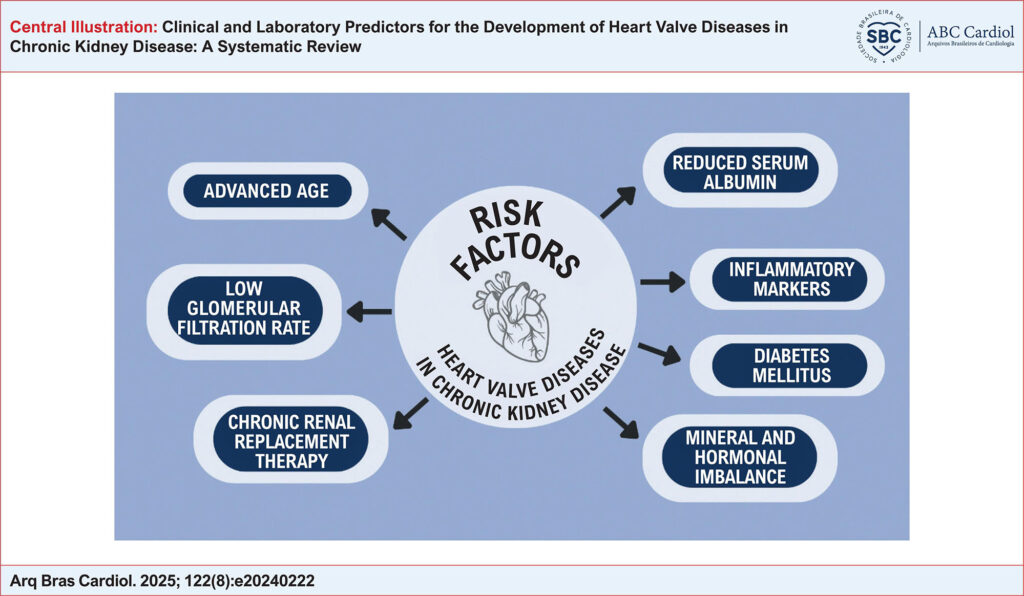Arq. Bras. Cardiol. 2025; 122(8): e20240222
Clinical and Laboratory Predictors for the Development of Heart Valve Diseases in Chronic Kidney Disease: A Systematic Review
This Original Article is referred by the Short Editorial "Beyond Atherosclerosis: Mind the Valves in Chronic Kidney Disease".
Abstract
Background:
Chronic kidney disease (CKD) is associated with a higher prevalence of valvular diseases and increased mortality from cardiovascular causes. Factors that influence the genesis of cardiac valve calcification (CVC) in these patients are not well-defined.
Objective:
To determine the risk factors for valvular calcification in patients with CKD.
Methods:
Systematic review based on PRISMA, which included observational studies evaluating the association of clinical and laboratory data with CVC in patients with CKD, undergoing or not hemodialysis or peritoneal dialysis. Articles were retrieved from databases (MEDLINE; SCIELO; CENTRAL; EMBASE; LILACS/BVS) and selected blindly by two authors; discrepancies were resolved by a third author. Data collection and synthesis were carried out by the main author. The assessment of methodological quality and risk of bias was based on STROBE and Newcastle-Ottawa guidelines.
Results:
A total of 783 studies were identified, of which 20 were included, encompassing 13,314 patients from 10 countries. The factors most strongly associated with CVC were age >55 years, glomerular filtration rate <53 mL/min/1.73m2, renal replacement therapy (RRT) >20 months, hypoalbuminemia, C-reactive protein (CRP), serum levels of IL-6, TNF-α, parathyroid hormone, hyperphosphatemia, hypercalcemia, Ca × P product, and FGF-23 resulting from secondary hyperparathyroidism. Both mitral and aortic valves were studied, and no differences were observed between hemodialysis and peritoneal dialysis.
Conclusion:
Age, RRT, chronic inflammation, and secondary hyperparathyroidism promote calcium and phosphate deposition in the valves, making CKD patients more susceptible to CVC) Monitoring these parameters provides opportunities for prevention and treatment.
225

